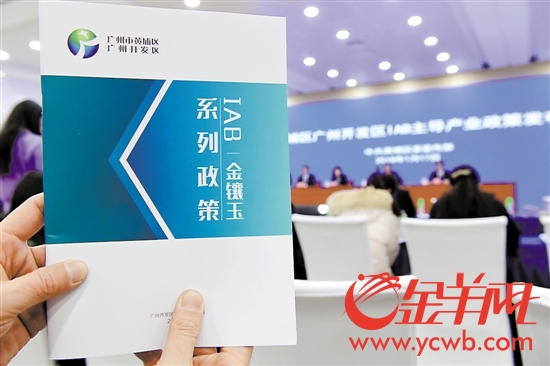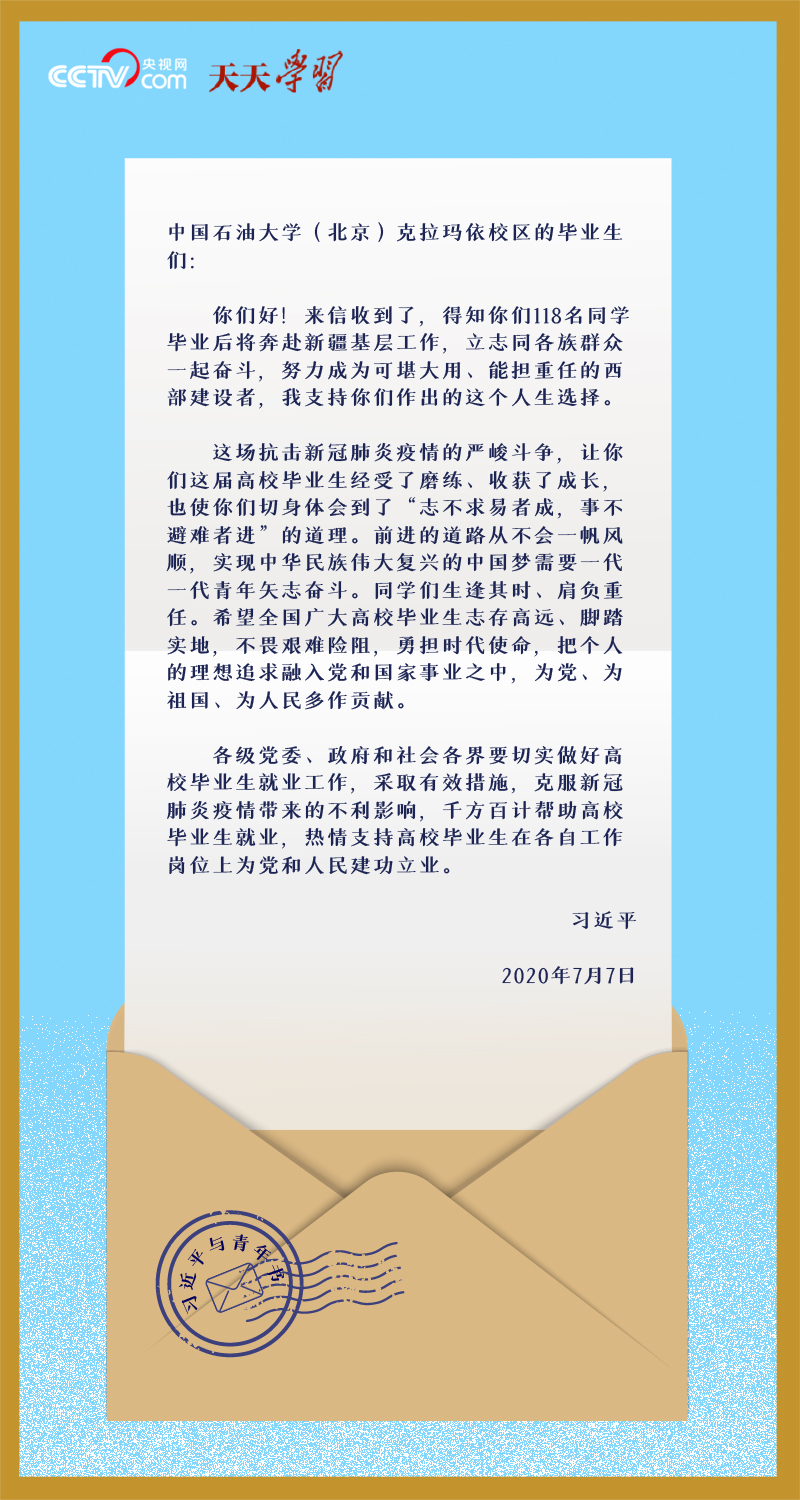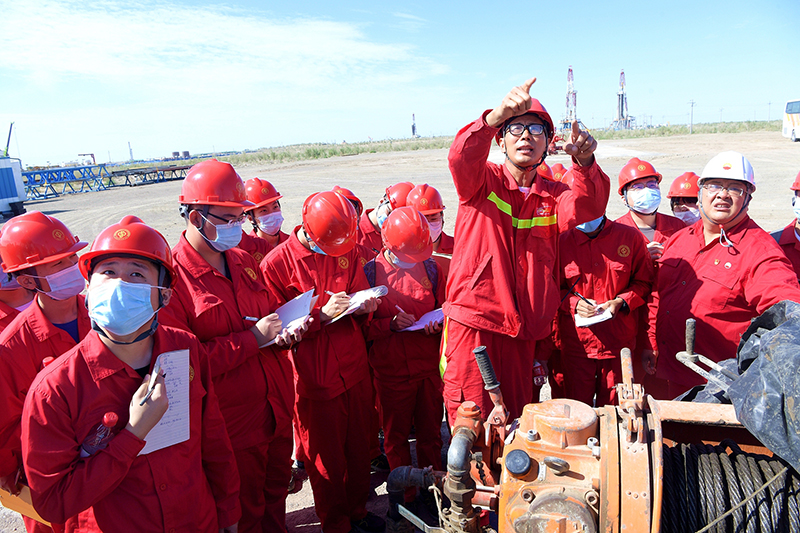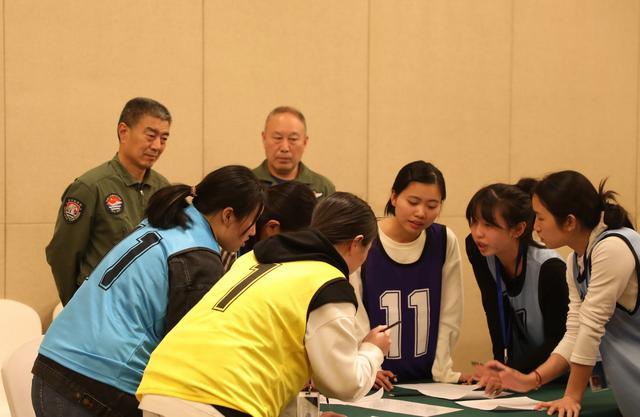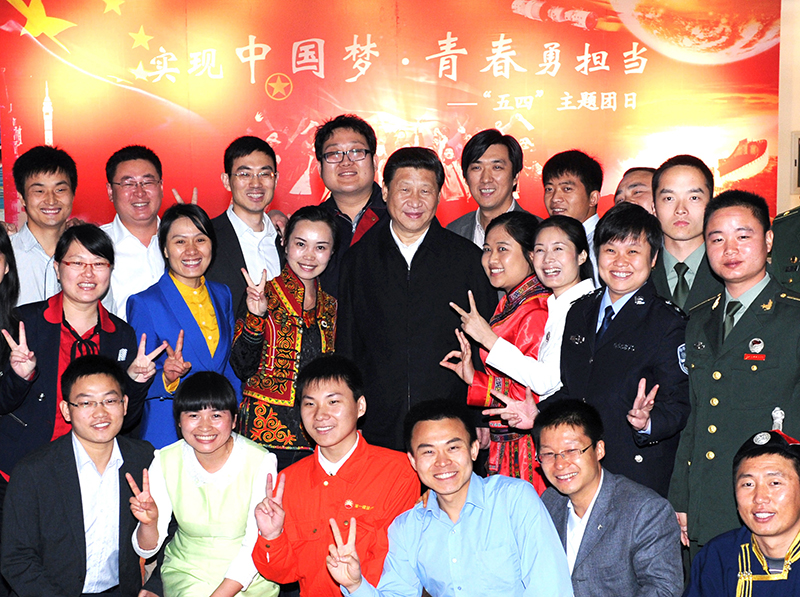According to the website of Beijing Municipal Health and Health Commission on December 29th, in order to help and guide the self-health management of novel coronavirus-infected people in convalescence, Beijing Municipal Health and Health Commission organized experts to formulate the Expert Guideline for Health Management of novel coronavirus-infected People in Recovery Period (First Edition). The full text is as follows:
Infected in novel coronavirus
Guidelines for health management experts in recovery period
(first edition)
This guideline brings together the opinions of experts and scholars in different fields and summarizes relevant clinical experience, aiming at helping and guiding the self-health management of novel coronavirus infected people in recovery period. If you are infected with Covid-19 and are in the recovery stage, please read this guide carefully and follow it, and be the first person responsible for your health.
First, the applicable population
According to the "novel coronavirus Diagnosis and Treatment Plan (Trial Ninth Edition)" and experts’ suggestions, when novel coronavirus infected people meet any of the following criteria and other symptoms are obviously improved, they have entered the recovery period: 1. Two consecutive nucleic acid tests are negative, and the Ct values are ≥ 35; 2. The results of antigen testing for three consecutive days were negative; 3. After 7 days of isolation at home, the fever symptoms subsided for more than 24 hours without using antipyretics.
Second, the main health problems and rehabilitation suggestions in the recovery period
According to the World Health Organization’s Guide to Personal Rehabilitation in COVID-19, combined with clinical observation and population survey, the convalescent population of Covid-19 infected people currently has the following health problems: shortness of breath, limited physical activity and exercise, physical decline and fatigue, hoarseness and cough, swallowing problems, smell and taste problems, anxiety and depression, sleep problems, physical pain and so on.
(1) Shortness of breath (shortness of breath)
Shortness of breath after infection in Covid-19 is more common. Suggestions on the problem of shortness of breath: You can try various postures to relieve shortness of breath to determine which one is effective. Prone position: lying flat with the abdomen down (prone position) can help relieve shortness of breath; Leaning forward: Sit next to a table, leaning forward above the waist, with your head and neck on the pillow on the table, your arms on the table, or sitting in a chair, leaning forward, and your arms on your knees or chair armrests; Leaning forward for standing position: in standing position, lean forward and lie on the windowsill or other stable supporting surface; Stand with your back leaning against the wall, with your hands at your sides, your feet about 30cm away from the wall, and your legs apart. In addition, we should pay attention to the following situations that need timely medical treatment: after slight activity, there is very obvious shortness of breath, which cannot be improved after adopting any posture to relieve shortness of breath; The degree of shortness of breath changes at rest, and it cannot be improved after using any breathing control technology; Feeling chest pain, rapid heartbeat or dizziness during certain postures, activities or exercises; There is weakness in the face, arms and legs, especially on one side of the body.
(2) Cough
Cough is an important defensive reflex of the body, which is beneficial to remove respiratory secretions and harmful factors. Suggestion on cough: general mild cough can be treated without treatment. If phlegm is too much or difficult to cough up, you can take acetylcysteine, ambroxol hydrochloride, eucalyptus citrulline capsules, carboxymethyl stane and other expectorants. If the cough is mainly dry cough, you can take dextromethorphan, compound methoxyphenamine capsules and antihistamines. In traditional Chinese medicine, if there is throat pain or cough (especially dry cough) and there are no other symptoms, you can take Jingfangbaidu powder, Yinqiao powder and Sangju drink to turn heat into fluid, moisten the lungs and relieve cough, and you can also use external treatment methods such as scrapping. If the cough is serious, affects daily work or sleep, or lasts for more than 3 weeks, it is recommended to go to the hospital for treatment.
(3) fatigue
Feeling weak or consciously tired, with no obvious relief after rest, is the most frequently reported symptom in the recovery period of Covid-19 infection. Suggestions on fatigue: keep the rhythm of daily life, determine the priority of activities, and make a reasonable work plan. Symptoms are mild and there is no dyspnea. Routine treatment of basic diseases can be accompanied by appropriate treatment of qi-invigorating drugs, such as lily and platycodon grandiflorum, which can replenish lung qi and promote qi-flowing. If dyspnea cannot be relieved, you need to go to the hospital in time. Traditional Chinese medicine external treatment methods such as soaking and washing can be used. Take 3 slices of ginger (about the size of a one-yuan coin), add 5 grams of moxa and 5 grams of salt, boil for 10 minutes, add water above the ankle joint, control the temperature at 40-43℃, and keep this temperature for about 30 minutes, once a day. It is advisable to sweat slightly, not to sweat profusely. If you have heart disease, the soaking time needs to be halved, and it must not be too long. If dyspnea cannot be relieved, you need to go to the hospital in time.
(D) Insomnia
Symptoms such as difficulty in falling asleep, short sleep time, shallow sleep, and dreaminess may appear during the recovery process of Covid-19 infection. Suggestions on insomnia: sleep and get up regularly. Make sure there are no distractions in your environment, such as excessive light or noise; Try to stop using electronic devices such as mobile phones and tablets one hour before going to bed; Minimize the intake of nicotine (such as smoking), caffeine and alcohol; Try relaxation techniques to help you fall asleep, such as meditation, mindfulness decompression therapy, thinking or bathing, aromatherapy, Tai Chi, yoga and music. You can also use traditional Chinese medicine to soak and wash.
(5) Pain
In the process of Covid-19’s infection and recovery, there are often pain manifestations such as bone and joint pain, muscle soreness and sore throat. Suggestions on pain: For joint, muscle or whole body pain, you can take analgesic drugs such as paracetamol or ibuprofen with meals. For sore throat, you can use Jin Houjian, mint buccal tablets and other drugs to treat it. A good sleep helps to relieve the pain symptoms. Listening to relaxing music or meditation can also help relieve pain. Adjusting the rhythm of daily activities is one of the keys to controlling pain. You can also use hot compress, scraping and other external treatments of traditional Chinese medicine. If you have obvious chest pain, you should go to a medical institution in time.
(6) palpitation
In the rehabilitation stage of Covid-19 infection, some patients have symptoms of palpitation and palpitation. At this time, it is suggested that we should pay more attention to rest, adjust our daily routine, keep enough sleep, and at the same time, we should strengthen our own nutrition and eat more foods rich in protein and vitamins to improve the body’s disease resistance. If the symptoms of palpitation are obvious, the pulse lasts more than 100 times per minute and less than 60 times, or irregular pulse occurs, it is necessary to be alert to the occurrence of viral myocarditis. It is recommended to go to the hospital for examination in time to find out the cause and take measures.
(7) Sound problems
Covid-19 infection can cause sore throat, irritating cough and the feeling of phlegm accumulation in the throat, so it is necessary to clear your throat frequently. There may also be a weak voice, wheezing or hoarseness, especially after using a ventilator in a hospital. Suggestions on sound problems: replenish enough water and inject water several times a day to keep the sound as normal as possible. Don’t make your voice tense. Don’t speak in a whisper, because it will strain the vocal cords, and try not to speak or shout loudly. Inhale steam (cover your head with a towel and inhale steam from a cup filled with boiling water) for 10-15 minutes, which can relieve dryness and moisten the vocal tract. It is recommended to stop smoking.
(VIII) Swallowing problems
It is difficult to swallow food and drink because the muscles that help swallow may be weakened. Suggestions on swallowing: keep your body straight when eating and drinking, and never eat or drink lying down. Stay upright (sit, stand, walk) for at least 30 minutes after meals. Try foods with different textures. You can choose soft, smooth or moist foods, or cut solid foods into very small pieces to eat. You should chew slowly when eating, and don’t wolf it down. Pay attention when eating or drinking water. Try to choose a quiet place to eat. Avoid talking while eating or drinking water. Make sure there is no food in your mouth before eating or drinking a bite. If necessary, swallow once first. If you feel tired after eating a whole meal, you can eat less and more meals in a day. Keep your mouth clean by brushing your teeth and drinking water. If you cough or choke when eating or drinking water, please consult a medical staff, because food or drink may have entered your lungs by mistake.
(9) Decreased sense of smell and taste
If the sense of smell or taste declines, it is recommended to try the following: brush your teeth twice a day to ensure oral hygiene. Conduct olfactory training, including smelling lemon, rose, clove or eucalyptus twice a day for 20 seconds each time. Try adding herbs and spices to food, such as lemon juice and fresh herbs. Most sense of smell and taste decline and will recover within one month after Covid-19 infection.
Third, psychological adjustment and nutritional support in recovery period
(A) psychological debugging in recovery period
In the process of Covid-19’s infection and recovery, it is natural to feel fear, tension and anxiety, so there is no need to be overly nervous. To overcome fear, tension and anxiety, we can start from the following aspects:
1. To keep a regular schedule, ensure adequate sleep, moderate exercise, reading, listening to music, etc., and ensure a healthy diet. Don’t take negative coping styles, such as denial, avoiding retreat, relying too much on others, accusing and complaining, transferring emotions, losing temper, impulsiveness, etc., especially don’t try to relieve tension through alcohol and tobacco.
2. Actively carry out psychological adjustment, communicate with others, encourage each other, support each other psychologically, and divert attention.
3. Breathing relaxation training, aerobic exercise, mindfulness meditation and meditation can be carried out to adjust emotions.
(2) Nutritional support in recovery period
You can eat a small amount of meals, pay attention to the regular and quantitative diet, and the food is diverse and reasonably matched. Keep the variety of food, pay attention to both meat and vegetables, and match the thickness; Eat more fresh vegetables, fruits, soybeans, milk and cereals; Eat fish, poultry, eggs and lean meat in moderation, preferably fish, shrimp, poultry and lean meat, and eat less fat. The diet is light and not greasy. Avoid spicy and irritating foods and fried and greasy foods. To ensure the amount of drinking water, boiled water is the first choice, and sugary drinks are less or not.
Rational use of medicinal diet for food maintenance and dietotherapy, combined with the winter climate characteristics, it is recommended to use traditional Chinese medicine dietary therapy such as Sydney Siraitia grosvenorii water, corn silk orange peel water, white radish honey water, walnut onion and ginger soup, pear soup, yam, melon and lotus seed porridge, coix seed and poria cocos yam porridge.
Fourth, matters needing attention in daily life
During the recovery period of Covid-19 infection, although the test results of nucleic acid and antigen have turned negative, the body has not recovered to the pre-disease level, and it will take 1-2 weeks or even longer to completely relieve. At this stage, personal protection, daily life, daily exercise, return to work and other aspects should be based on the principle of step by step and do what you can, and gradually return to normal.
(1) Matters needing attention in daily life
1. At present, it is in the period of high incidence of respiratory infectious diseases in winter, and the risk of overlapping epidemic of Covid-19 infection with influenza, common cold and other respiratory infectious diseases in winter and spring cannot be ruled out, and the standard of self-protection cannot be lowered because of "Yang Kang". When going out, we should continue to wear masks scientifically, reduce gathering, and do not go to crowded places and closed spaces unless necessary. Hand hygiene should be done at all times, especially after contact with suspicious pollutants or the surface of public objects with high frequency.
2. Ensure adequate nutrition, regular work and rest and good sleep. Pay attention to eating more high-protein and nutritious food in diet. Smoking and drinking habits, especially those with risk factors, will aggravate the basic diseases. It is suggested that it is best to quit smoking and limit alcohol after "Yangkang". For those who have a bad appetite or taste disorder after "Yangkang", it is recommended to eat less and eat more meals. Diabetic patients should keep a regular diet to avoid large fluctuations in blood sugar.
3. After the symptoms of acute fever subside, you can take a bath if your physical strength allows, but you should avoid steaming sauna. When bathing, you must avoid catching cold, pay attention to the indoor temperature, and the bath water temperature should not be too high.
(2) Matters needing attention in daily exercise
1. On the basis of regular daily life, ensuring adequate nutrition and sleep, start with low-intensity activities, such as walking, eight-segment brocade, simple daily housework, etc. If there is no obvious discomfort, you can gradually increase the intensity of activities within a few weeks, such as going up and down stairs, brisk walking, jogging, cycling, swimming and dancing until you return to your normal activity state before you get sick.
2. If you have chest pain, palpitation, dizziness and other uncomfortable symptoms during exercise, you should immediately stop exercising and seek medical advice if necessary. For hospitalized rehabilitation patients, patients with original cardiopulmonary diseases and patients with symptoms such as fatigue, chest tightness and dyspnea, strenuous exercise or heavy work should be avoided within 2 weeks, and low-intensity exercise can be maintained for at least 1-2 weeks, and then higher-intensity exercise should be carried out after the body gradually adapts.
(III) Matters needing attention in returning to work
1. At the beginning of returning to work, start from the lighter work and gradually return to the normal workload and working state to avoid nervousness, overtime, staying up late and other behaviors.
2. If possible, take a lunch break for 20-30 minutes.
3. Because there are differences in individual constitution, age and illness, there will be differences in recovery time, so the recovery work is gradual, and the intensity is based on not feeling tired.
V. Suggestions on home disinfection
Covid-19 infected people should strengthen indoor ventilation after entering the recovery period, and disinfect key areas and used items on the basis of cleanliness and hygiene. Physical disinfection methods such as sun exposure and heat are preferred as disinfection methods, and chemical disinfectants can be used to wipe the surface of home environment. Disinfectants, such as chlorine-containing disinfectants, quaternary ammonium salt disinfectants, hand disinfectants, etc., can also be used to disinfect wet wipes with alcohol or quaternary ammonium salt.
(A) disinfection methods for different objects
1. Indoor air. Open the window regularly every day to keep indoor air circulation. If there is no natural ventilation condition, mechanical ventilation can be carried out by exhaust fan and air conditioning system.
2. the surface of the object. When there are pollutants on the surfaces of tables, chairs, furniture, door handles, faucets, etc., clean them first, and then wipe them with 500mg/L chlorine-containing disinfectant. You can also choose quaternary ammonium salt disinfectant with little irritation, and clean them with water after 30 minutes. Small items such as mobile phones, remote controllers and mice can be wiped and disinfected with alcohol wipes.
3. Surfaces such as the ground and walls that may be polluted. If there are pollutants, they should be completely cleaned before disinfection, and can be wiped or sprayed with 500mg/L chlorine-containing disinfectant for disinfection, and the disinfection time is not less than 30 minutes.
4. Dining (drinking) utensils. First clean and then disinfect, preferably boil and disinfect for 15 minutes, or soak in 500mg/L chlorine-containing disinfectant for 15 minutes, and then clean with water.
5. Textiles such as clothes, bedding and towels. It can be boiled and disinfected for 15 minutes or washed with heated water, and kept above 56℃ for 30 minutes. It can also be soaked in 1000mg/L quaternary ammonium salt disinfectant or other clothing disinfectant for 30 minutes, and then cleaned as usual. For fabrics that can’t be washed with water, they can stand at room temperature for 7-10 days.
6. Sanitary appliances such as mops and rags. It should be used exclusively in the special area to avoid cross-cutting. After use, it should be soaked and disinfected with 1000mg/L chlorine-containing disinfectant, rinsed with clean water after 30 minutes, and dried for storage.
7. the bathroom. After the toilet seat cushion and its surroundings can be cleaned, wipe and disinfect with disinfectant containing 1000mg/L-2000mg/L of available chlorine, and wipe and disinfect toilet door handles, faucets, hand-washing countertops and other parts that are often contacted by hands with disinfectant containing 500mg/L of available chlorine. After 30 minutes, wipe them with clean water to strengthen the exhaust of the toilet.
8. Refrigerators and frozen foods. If the frozen food stored in the refrigerator is polluted, it is recommended to treat it as garbage; If you need to eat it, you can also eat it after it is cooked thoroughly. During the food processing, do a good job of personal protection, wear masks and gloves, and strictly observe hand hygiene. If the inner wall of the refrigerator is polluted, it is suggested to refer to the disinfection method of "object surface" after the temperature in the refrigerator returns to normal temperature.
9. Domestic garbage. Garbage should be collected and cleaned in time. It is suggested that the outer surface of the garbage bag should be sprayed with chlorine-containing disinfectant containing 500mg/L-1000mg/L of effective chlorine after the double-layer plastic bag is tightly bound, and then transported to the garbage dropping point.
10. Other items. Articles that are not suitable for disinfection, such as books and valuables, can be treated by sealing and standing at room temperature for 5-7 days.
(2) Precautions related to disinfection
1. Disinfectant should be prepared now. Take a chlorine-containing disinfectant with the effective chlorine content of 5% as an example: when preparing 500mg/L, take 1 part of disinfectant and add 99 parts of water to mix well; When preparing 1000mg/L, take 1 part of disinfectant, add 49 parts of water and mix well.
2. Disinfectants, especially chlorine-containing disinfectants, are irritating to some extent, so personal protection should be paid attention to when preparing and using them, and splash to eyes should be prevented. At the same time, the disinfectant is corrosive to a certain extent, so it should be wiped with clean water after reaching the disinfection time to prevent damage to articles.
3. Disinfectant should be used alone and not mixed with other chemical components. Before use, read disinfection products’s instructions carefully and use it correctly in strict accordance with the scope of use, method of use, action concentration and action time specified in the instructions.
4. Disinfection at home should be scientific and standardized, avoiding over-disinfection, not directly using disinfectants to disinfect the human body, not disinfecting indoor air under manned conditions, not using alcohol to disinfect the air, and not carrying out large-scale disinfection.
5. Disinfectant should be stored in a cool and dark place to avoid children’s touch.
Six, the key population health guidance
(a) the elderly
1. Old people often still have a certain degree of fatigue after the nucleic acid or antigen turns negative, even lasting for several weeks. If you feel tired, please rest as much as possible. Try to adjust the daily pace of doing things and don’t do too many things at once.
2. If energy permits, please ask your old friends to gradually resume your daily routine and make a daily schedule for yourself, including sleeping, eating and activities.
3. Exercise safely and without fatigue to restore strength and endurance. If walking is difficult for you, consider exercising on the bed or chair, starting with stretching, and gradually increasing the amount of activities, such as doing housework, walking, Tai Chi, Ba Duan Jin and so on. When you start exercising, start with 5-10 minutes, and then add one minute every day. If you are worried about falling, please exercise when you have family or friends. If you feel dizzy, chest pain or dyspnea during or after exercise, please stop to rest and consult your doctor.
4. Drink 1500-2000ml of water every day, three meals a day are not lacking, and you can add meals appropriately. It is recommended to record daily food to help you know whether you are eating healthily.
5. Keep in touch socially. Talk to as many relatives and people you trust by phone, video call or other means of communication as possible every day.
6. Try to think three happy things every day, try to repeat the words "relax" and "calm" when taking a deep breath, and try to avoid negative or unhealthy thoughts; If stress, worry, fear and sadness interfere with daily activities for several days, please contact your doctor for psychosocial support.
7. List emergency telephone numbers: such as the telephone numbers of nearby medical institutions, social and psychological support helplines, family doctors, family members and friends.
8. After the elderly with basic diseases are infected with Covid-19, the basic diseases will get worse. For example, elderly people with hypertension may have unstable blood pressure after infection, elderly people with diabetes may have unstable blood sugar after infection, elderly people with cerebrovascular disease may have the risk of cerebral infarction or bleeding after infection, and elderly people with chronic obstructive pulmonary disease may have cough and dyspnea after infection. The elderly turn negative after treatment with nucleic acid or antigen test, but the aggravated basic disease may not be stable with it, so it is necessary to closely monitor blood pressure, blood sugar, finger oxygen saturation, etc. If the condition is unstable for a long time, please go to the hospital in time and adjust the treatment plan for the basic disease.
(2) Pregnant women
1. No matter what gestational age, pregnant women should pay attention to rest within 1-2 weeks after recovery from Covid-19 infection, and can take appropriate exercise, but the intensity of exercise should not be too large, and the time should not be too long, step by step. Warm up well before exercise, and replenish water properly before and after exercise. If threatened abortion, placenta previa and other conditions are not suitable for exercise, you should follow the doctor’s advice.
2. Pay attention to ensure reasonable and adequate nutrition intake throughout pregnancy.
3. To maintain a happy mood and emotional stability, there is no need to worry too much about the adverse effects of Covid-19 infection on the fetus. At present, it is considered that the probability of intrauterine infection caused by vertical transmission of Covid-19 to the fetus is extremely small, and generally it will not lead to malformation.
4. Pregnant women should have regular pregnancy tests, and pregnant women in the second and third trimesters should monitor their own fetal movements. If you have abnormal fetal movement, abdominal pain, abdominal discomfort, vaginal bleeding and other symptoms, you should go to the hospital immediately.
(3) Children and adolescents
Generally speaking, most children and adolescents infected with Covid-19 have a good prognosis, showing a self-limited course of disease, and the probability of serious complications and sequelae is extremely low. Parents should first keep a calm mind, understand the natural course of Covid-19 infection, and not be overly anxious.
1. Continue to do a good job of protection and develop good hygiene habits.
(1) Don’t take children and adolescents to crowded places, poorly ventilated rooms or contact with others for a long time. Wear a mask when going out (children over 3 years old) and try to keep a distance from others.
(2) When staying at home for a long time, indoor ventilation should be done. Try to choose ventilation when children and adolescents go out for activities, or ventilate each room separately.
(3) After going home, family members should wash their hands, wash their faces, change clothes, and then get in touch with their children. If there are respiratory tract infections at home, they should be isolated from their children and wear masks.
(4) Guide children and adolescents to develop good hygiene habits, and wash their hands before and after meals, after sneezing, coughing and cleaning their noses, and after going out.
2. Develop good living habits and enhance your own resistance.
(1) Regular work and rest and adequate sleep. Go to bed and get up on time, sleep at least 12 hours a day within one year old, 11 hours before kindergarten, 10 hours in kindergarten, at least 9 hours a day for primary school students and 8 hours for middle school students.
(2) Step by step, exercise. After Covid-19 recovered from infection, it is suggested that outdoor activities and physical exercise should be gradually increased, and the intensity should be suitable for children without discomfort.
(3) Regular meals and balanced diet. Do not be partial or picky about food, and cultivate healthy eating habits.
(4) Others: reasonably increase or decrease clothes and pay attention to mental health.
3. Correctly treat the recovery symptoms. Some children and adolescents will continue to cough for some time after Covid-19 infection. If the general situation is good, it does not affect daily life and does not need special treatment, it is usually not recommended to use antitussive drugs. However, if the child originally had bronchial asthma, allergic rhinitis, etc., and the cough time was not recovered for more than 3 weeks, and the cough was mainly at night, he should also seek medical attention in time.
4. Parents should be vigilant against high-risk groups such as congenital heart disease, chronic lung disease, nervous system disease, severe malnutrition, tumor, obesity, diabetes or hereditary diseases, immunodeficiency or long-term use of immunosuppressants, premature infants or newborns. When the child continues to have high fever for more than 3 days, shortness of breath, listlessness, persistent chest tightness or chest pain, or the condition worsens, he should seek medical attention in time.
managing editor| Zhai Qiaohong edit| Expert Wei
source| Beijing Municipal Health and Wellness Committee, cover picture: Health Times Cao Zihao photo















